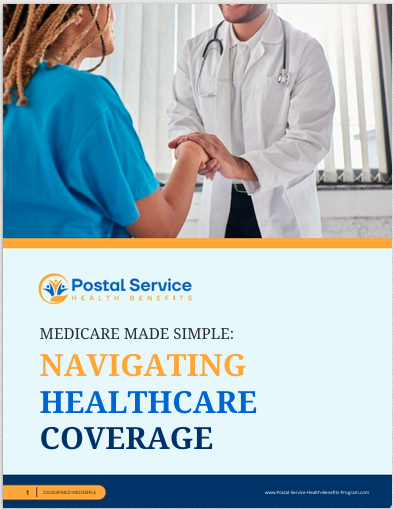Key Takeaways
-
Enrolling in the Postal Service Health Benefits (PSHB) program requires careful planning to ensure your coverage meets your needs without unexpected costs.
-
Understanding eligibility, Medicare integration, and enrollment timelines can help you make informed decisions and avoid costly mistakes.
Who Needs to Enroll in PSHB?
The PSHB program replaces the Federal Employees Health Benefits (FEHB) program for Postal Service employees and retirees starting in 2025. If you fall into one of the following categories, you must take action:
-
Current USPS employees who want continued health coverage.
-
Retirees who were previously covered under FEHB but now need to transition to PSHB.
-
Medicare-eligible annuitants who must ensure they comply with new Medicare Part B enrollment requirements.
-
Family members of eligible Postal employees and retirees who wish to maintain coverage.
What You Need to Know About Enrollment Timelines
Timing is everything when it comes to PSHB enrollment. Missing key deadlines could result in a lapse of coverage or higher costs. Here’s what you need to know:
-
Initial Enrollment Period: The transition to PSHB began in early 2025, with automatic enrollment for many, but it’s crucial to review your options.
-
Open Season: Happens annually from November to December, allowing you to change plans or enroll if you previously opted out.
-
Qualifying Life Events (QLEs): Certain events, such as marriage, divorce, or loss of other coverage, may allow you to modify your PSHB selection outside Open Season.
-
Late Enrollment Consequences: If you miss Open Season and do not qualify for a QLE, you may have to wait until the next Open Season to enroll, which could leave you without coverage for months.
Understanding PSHB and Medicare Integration
One of the most significant changes with PSHB is its coordination with Medicare, which affects retirees and those approaching Medicare eligibility.
-
Medicare Part B Requirement: If you are an annuitant eligible for Medicare, you must enroll in Medicare Part B to retain PSHB coverage, unless you qualify for an exemption.
-
Prescription Drug Coverage: Medicare-eligible PSHB enrollees will automatically be enrolled in a Medicare Part D Employer Group Waiver Plan (EGWP), which affects how prescription costs are managed.
-
Potential Cost Savings: Many PSHB plans offer reduced cost-sharing for those enrolled in Medicare Part B, meaning lower deductibles and out-of-pocket expenses.
-
Impact on Spouses and Dependents: If you are required to enroll in Medicare Part B, your dependents covered under PSHB should also review how their coverage is affected to avoid unexpected expenses.
Common Pitfalls to Avoid
Enrolling in PSHB is a significant decision, and making a mistake could lead to coverage issues or higher costs. Here are some common errors to watch out for:
1. Assuming Automatic Enrollment Covers Everything
While many Postal Service retirees and employees will be automatically enrolled in a comparable PSHB plan, you should not rely on this alone. Plans can differ in coverage, costs, and provider networks. Reviewing your options is essential to ensure you get the best coverage for your needs.
2. Missing the Medicare Part B Enrollment Deadline
If you are a Medicare-eligible annuitant, failing to enroll in Medicare Part B can result in losing your PSHB coverage or facing late enrollment penalties. Ensure you sign up during your Initial Enrollment Period (IEP) or Special Enrollment Period (SEP) to avoid complications.
3. Overlooking Plan Costs and Coverage Changes
PSHB plans have different:
-
Deductibles that must be met before coverage begins.
-
Coinsurance rates that determine your share of medical costs.
-
Copayments for doctor visits, prescriptions, and hospital stays. Review these factors annually to ensure you are in the right plan for your budget and healthcare needs.
4. Ignoring Changes in Dependent Coverage
Your family members’ eligibility for PSHB coverage may change depending on your employment status, retirement, or Medicare enrollment. Double-check that dependents remain covered under the selected plan.
5. Failing to Compare Plans Each Year
Even if your current plan works for you, it’s important to check for any premium increases, deductible changes, or shifts in covered benefits. Plans evolve annually, and a better option may be available to you.
How to Choose the Right PSHB Plan
Selecting the best PSHB plan requires evaluating different factors, including:
-
Premiums and Out-of-Pocket Costs: Consider how much you’ll pay monthly and what expenses you may incur for doctor visits, hospital stays, and prescriptions.
-
Provider Network: Ensure your preferred doctors, specialists, and hospitals are included in the plan’s network.
-
Prescription Drug Coverage: If you take regular medications, check whether your plan covers them at an affordable cost.
-
Extra Benefits: Some PSHB plans include dental, vision, and wellness programs that may be beneficial for you and your family.
-
Travel Considerations: If you travel frequently, check whether your plan offers nationwide or international coverage.
Steps to Take Before Enrolling
To ensure a smooth enrollment process, follow these steps:
-
Review Plan Options – Compare available PSHB plans based on coverage, costs, and benefits.
-
Confirm Medicare Enrollment – If applicable, sign up for Medicare Part B to maintain eligibility.
-
Check Dependent Eligibility – Verify that your spouse and children are still covered under your chosen plan.
-
Evaluate Prescription Drug Costs – If you’re Medicare-eligible, understand how the automatic enrollment in Medicare Part D through EGWP affects your medications.
-
Submit Enrollment on Time – Enroll during Open Season or within the appropriate enrollment period to avoid coverage gaps.
-
Consult an Expert if Needed – If you’re unsure about which plan is right for you, seek professional advice before making a final decision.
-
Verify Your Enrollment – After submitting your enrollment, double-check that your plan selection has been processed correctly to avoid surprises later.
Getting Help with Your PSHB Enrollment
Navigating PSHB enrollment can be complex, especially with Medicare integration and changing plan options. If you have questions or need professional guidance, reach out to a licensed agent listed on this website for expert advice tailored to your specific situation.





